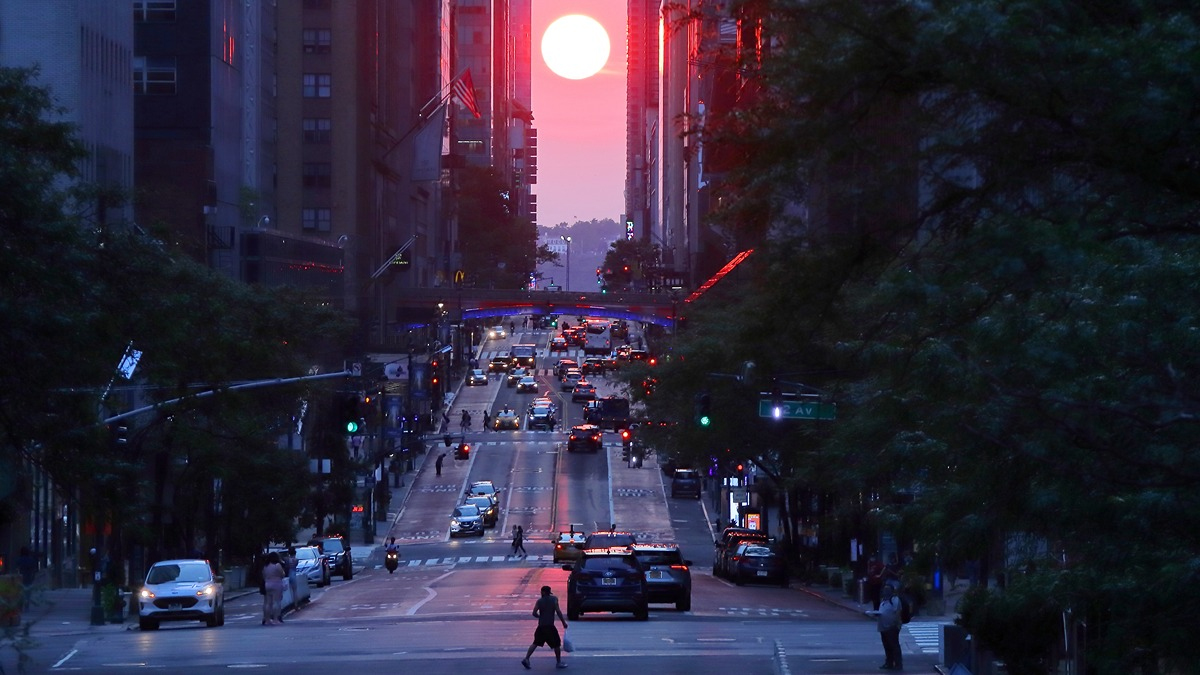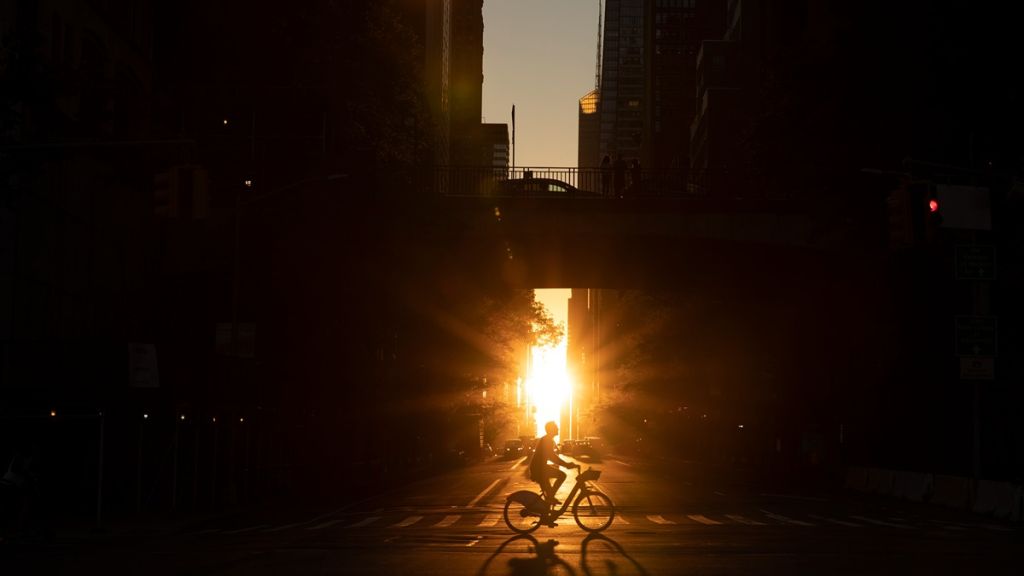Don't miss the first 'Manhattanhenge' of 2022 this Memorial Day weekend
Catch the show on May 29 and 30, weather permitting.
New York City's special solstice is just around the corner.
Big Apple residents and visitors can catch the gorgeous "Manhattanhenge" this Memorial Day weekend as the sun sets between buildings on Sunday (May 29) and Monday (May 30), particularly if you're around 14th, 23rd, 34th, 42nd and 57th Streets.
The phenomenon occurs twice a year when the setting sun aligns with east-west oriented streets in New York City, weather permitting. If you can't catch it, the next opportunity will be July 12 and 13, according to EarthSky.
Related: Stonehenge may have been used as a solar calendar
"Viewers can also witness the phenomenon from the Tudor City Overpass in Manhattan, or Hunter's Point South Park in Long Island City, Queens," EarthSky stated.
"Regardless of where you watch the sunset," EarthSky added, "make sure you're as far east as possible, while keeping New Jersey in the background across the Hudson River, to accentuate the effect."
The name "Manhattanhenge" borrows from Stonehenge, the famous English Neolithic monument whose sarsen stones and orientation with landmarks in the surrounding area are meant to reflect the movements of the sun, according to monument caretaker English Heritage.
Get the world’s most fascinating discoveries delivered straight to your inbox.
"If you were to stand in the middle of the stone circle on midsummer's day, the sun rises just to the left of the 'Heel Stone', an outlying stone to the north-east of the monument," English Heritage stated.
The winter solstice also has an alignment, English Heritage added. "On midwinter's day, turning 180 degrees to face towards the south-west, the sun would originally have set between the two uprights of the tallest [stone monument], at the head of the sarsen horseshoe."
While the summer solstice tends to attract celebrants, COVID conditions permitting, archaeology suggests the winter solstice might have been more important in the Neolithic, English Heritage said on another page. That's because Durrington Walls, a settlement just 2 miles (3 km) from Stonehenge thought to host the monument's builders, has extensive evidence of feasting during the colder months.
Many urban environments receive the same effect as Manhattan experiences at some point in the year, due to the sun's orientation relative to the buildings, EarthSky explained.
That's because the sunset's position on the horizon is always shifting because of the inclination of the Earth's axis to our orbit. Manhattan's city grid tends to be at 29 degrees east of true north to reflect the orientation of the island.
"At this time of year — between the March equinox and June solstice — the sunset point is shifting northward each day on the horizon as seen from around the globe," EarthSky stated.
"It's the northward-shifting path of the sun that gives us summer in the northern hemisphere and winter in the Southern Hemisphere ... it's the shifting path of the sun that gives people various alignments of the sunset with familiar landmarks."
Follow Elizabeth Howell on Twitter @howellspace. Follow us on Twitter @Spacedotcom and on Facebook.

Elizabeth Howell was staff reporter at Space.com between 2022 and 2024 and a regular contributor to Live Science and Space.com between 2012 and 2022. Elizabeth's reporting includes multiple exclusives with the White House, speaking several times with the International Space Station, witnessing five human spaceflight launches on two continents, flying parabolic, working inside a spacesuit, and participating in a simulated Mars mission. Her latest book, "Why Am I Taller?" (ECW Press, 2022) is co-written with astronaut Dave Williams.





